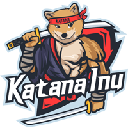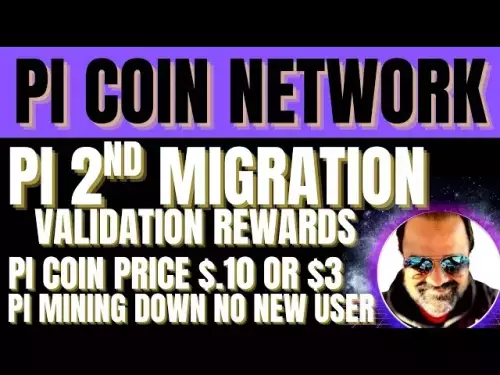 |
|
 |
|
 |
|
 |
|
 |
|
 |
|
 |
|
 |
|
 |
|
 |
|
 |
|
 |
|
 |
|
 |
|
 |
|

Original Title: "What I'm Watching in 2025"
Author: Teng Yan, Researcher (Focusing on Crypto x AI)
Compilation: Felix, PANews
With the explosion of the AI industry this year, Crypto x AI has rapidly risen. Researcher Teng Yan, who focuses on Crypto x AI, has published 10 predictions for 2025. Here are the details of the predictions.
1. The total market value of crypto AI tokens will reach $150 billion
Currently, the market value of crypto AI tokens accounts for only 2.9% of the altcoin market, but this ratio will not last long.
AI encompasses everything from smart contract platforms to memes, DePIN, agent platforms, data networks, and intelligent coordination layers, and its market position is undoubtedly on par with DeFi and memes.
Why am I so confident about this?
2. Bittensor Revival
The decentralized AI infrastructure Bittensor (TAO) has been online for years and is a veteran project in the crypto AI field. Despite the AI craze, its token price has lingered at levels from a year ago.
Now, Bittensor's Digital Hivemind has quietly achieved a leap: lower registration fees for more subnets, subnets outperforming Web2 peers in practical metrics like inference speed, and EVM compatibility bringing DeFi-like functionalities to Bittensor's network.
Why hasn't the TAO token skyrocketed? A sharp inflation plan and market focus on agent platforms have hindered its rise. However, dTAO (expected to launch in Q1 2025) could be a significant turning point. With dTAO, each subnet will have its own token, and the relative price of these tokens will determine how emissions are allocated.
Why Bittensor can make a comeback:
3. The computing market is the next "L1 market"
The obvious trend is the endless demand for computing.
NVIDIA CEO Jensen Huang once said that inference demand will grow "a billion times." This exponential growth will disrupt traditional infrastructure plans, and new solutions are urgently needed.
Decentralized computing layers provide raw computing in a verifiable and cost-effective manner (for training and inference). Startups like Spheron, Gensyn, Atoma, and Kuzco are quietly building a solid foundation, focusing on products rather than tokens (none of these companies have tokens). As decentralized training of AI models becomes practical, the entire potential market will surge.
Comparison with L1:
Just as Solana won in the L1 space, the winner will dominate a brand new domain. Keep a close eye on reliability (e.g., strong service level agreements or SLAs), cost-effectiveness, and developer-friendly tools.
4. AI agents will flood blockchain transactions
By the end of 2025, 90% of on-chain transactions will no longer be clicked "send" by real humans, but executed by a group of AI agents that continuously rebalance liquidity pools, allocate rewards, or execute small payments based on real-time data feedback.
This doesn't sound far-fetched. Everything built over the past seven years (L1, rollup, DeFi, NFT) has quietly paved the way for a world where AI operates on-chain.
Ironically, many builders may not even realize they are creating infrastructure for a machine-dominated future.
Why will this shift happen?
AI agents will generate a massive amount of on-chain activity, and it's no wonder all L1/L2s are embracing agents.
The biggest challenge is making these agent-driven systems accountable to humans. As the ratio of agent-initiated transactions to human-initiated transactions continues to grow, new governance mechanisms, analytics platforms, and auditing tools will be needed.
5. Interaction between agents: The rise of clusters
The concept of agent clusters—micro AI agents seamlessly collaborating to execute grand plans—sounds like the plot of the next big sci-fi/horror movie.
Today's AI agents are mostly "lone wolves," operating in isolation with minimal and unpredictable interaction.
Agent clusters will change this status quo, allowing networks of AI agents to exchange information, negotiate, and make collaborative decisions. It can be seen as a decentralized collection of specialized models, each contributing unique expertise to larger, more complex tasks.
One cluster might coordinate distributed computing resources on platforms like Bittensor. Another cluster could handle misinformation, verifying sources in real-time before content spreads to social media. Each agent in the cluster is an expert capable of executing its task precisely.
These cluster networks will generate intelligence more powerful than any single isolated AI.
To enable clusters to thrive, universal communication standards are crucial. Regardless of their underlying frameworks, agents need to be able to discover, verify, and collaborate. Teams like Story Protocol, FXN, Zerebro, and ai16z/ELIZA are laying the groundwork for the emergence of
免责声明:info@kdj.com
所提供的信息并非交易建议。根据本文提供的信息进行的任何投资,kdj.com不承担任何责任。加密货币具有高波动性,强烈建议您深入研究后,谨慎投资!
如您认为本网站上使用的内容侵犯了您的版权,请立即联系我们(info@kdj.com),我们将及时删除。
-

-

- Swift测试与Linea的链上消息:全球金融的新时代?
- 2025-09-27 09:28:18
- Swift和Linea正在通过链接消息和Stablecoins链接彻底改变全球交易。发现这种合作的含义。
-

-

-

- 比特币,黄金,股票:在2025年浏览投资变化的沙子
- 2025-09-27 09:00:56
- 解开比特币,黄金和股票的最新趋势。发现经济数据,监管转变和新兴技术如何重塑投资策略。
-

-

-

-


























































